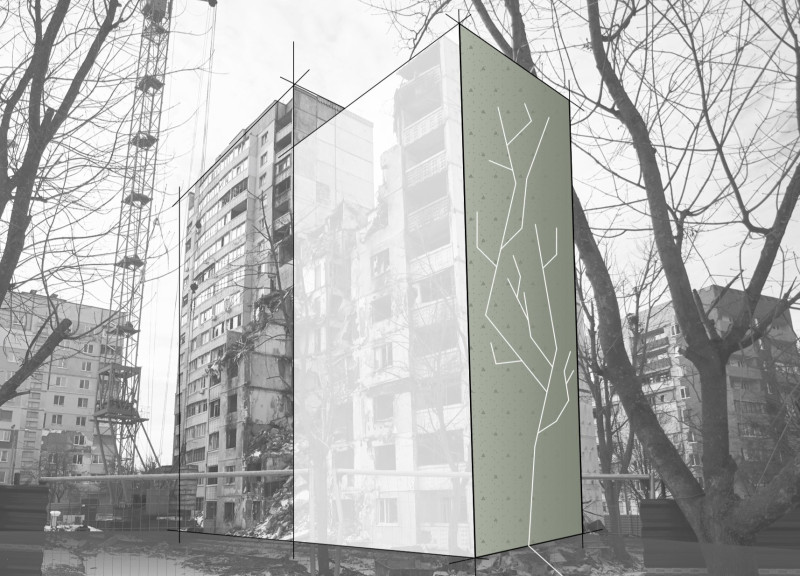5 key facts about this project
At its core, the project is designed to facilitate a specific function, whether it's residential, educational, or communal. The layout is meticulously organized to ensure fluid movement throughout the space, promoting interaction and engagement among users. Open-plan areas are skillfully incorporated, fostering a sense of community while also providing intimate spaces for privacy. Natural light is harnessed effectively through strategic window placements and the implementation of skylights, which imbue the interior spaces with warmth and vitality.
The architectural design is characterized by its careful consideration of materiality. A palette of locally sourced materials reinforces the connection to its environment and promotes sustainability. Elements such as timber, stone, glass, and steel are utilized, each carefully selected for their aesthetic and functional properties. The timber not only adds warmth to the interiors but also serves as a reminder of the local landscape, while the stone facades reflect a sense of permanence and stability. Glass is employed to create transparency, blurring the boundaries between inside and outside, and enhancing the users’ connection to the natural surroundings. The steel structural elements provide the necessary support while allowing for open spaces and expansive views.
Notably, the design approach demonstrates a commitment to sustainability. The integration of green roofs and walls, alongside efficient insulation strategies, minimizes the building's carbon footprint and enhances energy efficiency. Rainwater harvesting systems are also included, demonstrating an awareness of resource management and ecological responsibility. This approach not only meets current environmental standards but also sets a precedent for future architectural projects.
The roof design is a central architectural feature that complements the overall aesthetic while providing functional benefits. Its sloped surfaces are not merely decorative; they play a critical role in rainwater management and are designed to optimize solar gain. This attention to detail shows a sophisticated understanding of climatic influences on architecture, enhancing both performance and comfort for the users.
Moreover, the landscape surrounding the structure has been meticulously crafted to create a seamless transition between the indoor and outdoor environments. Pathways, gardens, and seating areas invite people to explore and engage with the space. The careful selection of native plant species not only enhances local biodiversity but also reduces the need for extensive irrigation, further embedding sustainability into the project’s design ethos.
In examining the architectural plans and sections, one can appreciate the careful thought that has gone into every detail of the design. The interplay of volumes, light, and materials reveals an architectural language that is both coherent and expressive. Each space is crafted with consideration for how users will interact with their environment, creating an experience that is both functional and enriching.
This project stands out not only for its commitment to functionality and sustainability but also for its thoughtful integration within the landscape and community. It reflects an architectural philosophy that respects local traditions while embracing contemporary practices. The result is a space that feels grounded in its location yet innovative in its execution.
To further explore the nuances of this project, including its architectural plans, sections, and design ideas, the presentation on this project provides an in-depth look at what makes it noteworthy. Engaging with these materials will enhance your understanding of the architectural thinking and strategies that have shaped this impactful design.


 Jessica Bernges
Jessica Bernges 























